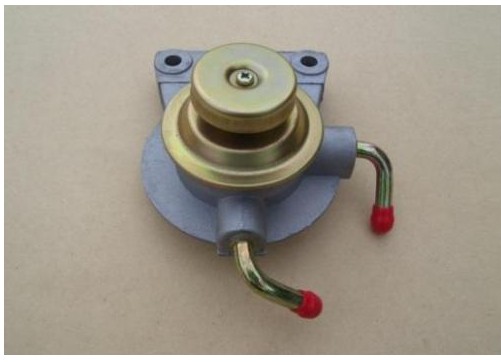A non-functional primer pump can be a frustrating issue, especially when trying to restart a diesel engine after maintenance or a fuel system issue. This article discusses a common problem with a diesel primer pump not drawing fuel, using a 1984 Toyota Hiace as a case study. We’ll explore troubleshooting steps and potential solutions, drawing from a real-world forum discussion.
Understanding the Problem: No Fuel Drawn by the Primer Pump
The owner of a 1984 Toyota Hiace encountered a problem where the hand primer pump wouldn’t draw fuel from the tank, despite a new fuel filter and ample fuel. Several troubleshooting methods were attempted:
- Repeated Pumping: Manually pumping the primer hundreds of times yielded no results.
- Advanced Priming Technique: A technique involving sealing the outlet while pumping, as described in the Haynes manual, was also unsuccessful.
- Bench Testing the Pump: The pump was removed and tested with a separate fuel source, and it functioned perfectly, drawing fuel with ease.
- Fuel Line Inspection: A thorough inspection of the fuel lines and hoses revealed no leaks, damage, or missing clamps.
The fact that the pump worked in isolation but not when connected to the vehicle suggests the issue lies within the fuel system itself rather than a defective pump.
Potential Causes and Solutions for a Failing Primer Diesel Pump
Several forum members offered insights into the potential cause of the problem:
-
Faulty Primer Pump Diaphragm: A common failure point in these pumps is a ruptured or deteriorated rubber diaphragm. This would allow air into the system and prevent the pump from creating the necessary vacuum to draw fuel. Replacing the primer pump is the recommended solution.
-
Low Fuel Level: While the owner confirmed having 15 liters of fuel, a very low fuel level can sometimes hinder the pump’s ability to draw fuel effectively. It was suggested that a fuller tank might help, but a failing primer is more likely the culprit if the pump can’t draw fuel from a reasonably low level.
-
Clogged Fuel Line or Pickup Tube: Though a visual inspection didn’t reveal any obstructions, a blockage in the fuel line or pickup tube within the tank could prevent fuel flow. Further investigation of these components might be necessary.
-
Incorrect Fuel Line Installation: One user suggested the possibility of reversed fuel lines, though this is less likely given the vehicle had undergone a restoration. However, verifying the correct installation of fuel lines is a crucial step.
Considering Aftermarket or Alternative Primer Pumps
Since the original Toyota primer pump (part number 23301-64010) is no longer in production, the owner explored aftermarket options. A similar pump, commonly used in various 80s and 90s Toyota models (Corolla, Land Cruiser, Hilux), was identified as a potential replacement. A Bosch primer pump was also suggested as a potentially superior alternative.
Filling the Fuel Filter: Necessary or Not?
A discussion arose regarding pre-filling the fuel filter with diesel before installation. While some suggested it might aid in priming, others, including the owner citing the factory service manual, stated it wasn’t necessary. A functioning primer pump should be able to draw fuel through an empty filter. However, in a completely dry system, pre-filling the filter might make the initial priming easier.
Conclusion: Likely a Faulty Primer Pump
In this case, the most probable cause of the primer pump not drawing fuel is a faulty diaphragm within the pump itself. Given the pump’s age and the confirmed functionality when tested in isolation, replacement is the recommended course of action. Aftermarket options are readily available, and even alternative pumps like the Bosch unit can be considered. While other factors like clogged lines or low fuel could contribute, they are less likely given the troubleshooting steps already taken. Always prioritize a systematic approach to diagnosing fuel system issues, starting with the most common points of failure.
